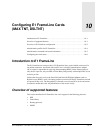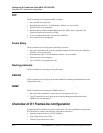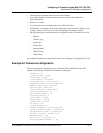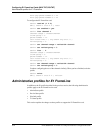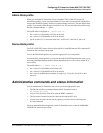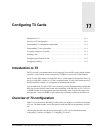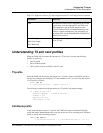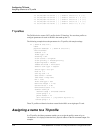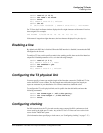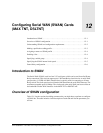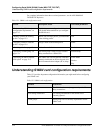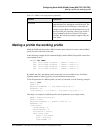
11-2 Preliminary May 9, 2000 APX 8000/MAX TNT/DSLTNT Physical Interface Configuration Guide
Configuring T3 Cards
Understanding T3 configuration requirements
For complete information about the associated parameters, see the APX 8000/MAX
TNT/DSLTNT Reference.
Understanding T3 configuration requirements
Configuring the T3 slot card is very similar to configuring the eight-port T1 slot card, but with
some important differences. Table 11-2 lists the differences.
Table 11-1. T3 line configuration tasks
Section Description of task Associated parameters
“Understanding T3 configuration
requirements” on page 11-2
Although you configure the T3 card similarly
to the eight-port T1 card, there are important
differences you must understand before
configuring the card.
Clock-Source
Clock-Priority
NFAS-ID
FDL
Front-End-Type
DSX-Line-Length
CSU-Buildout
“Understanding T3 slot card
profiles” on page 11-3
The TAOS unit creates a single T3 profile
and 28 T1 profiles for each T3 card in the
system.
N/A
“Assigning a name to a T3 profile”
on page 11-4
Assign a name to the T3 profile. Name
“Enabling a line” on page 11-5 Make a line available for use. Enabled
“Configuring the T3 physical link”
on page 11-5
Before you configure the T1 profiles that
make up the T3 card, you must first configure
the T3 physical line parameters in the T3
profile.
Physical-Address
Enabled
Frame-Type
Line-Length
“Configuring clocking” on
page 11-5
Any of the T1 lines associated with a T3 card
can be configured as the clock source for the
TAOS unit.
Clock-Source
Clock-Priority
Table 11-2. Differences between T3 card configuration and T1 card configuration
Parameter Difference
NFAS-ID The T3 card supports up to 14 NFAS groups. An NFAS
group can be composed of up to 28 lines, subject to the
limitations of the switch. NFAS is configured in the
same way as for the eight-port T1 card.




